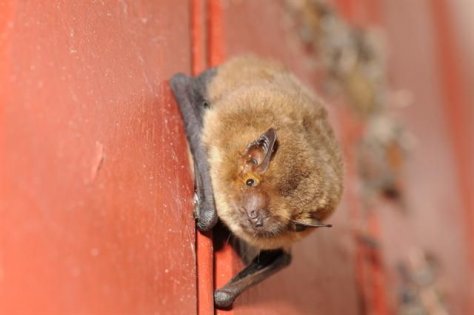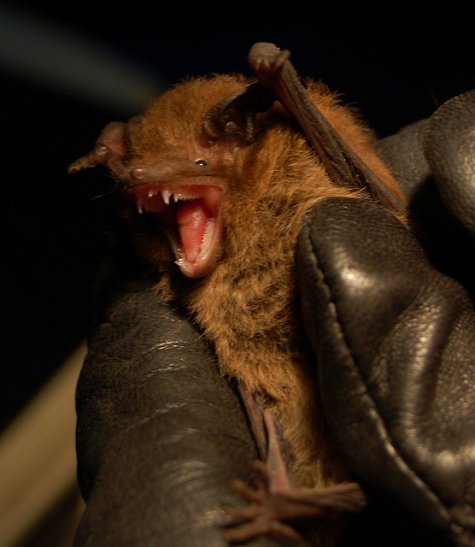Which other bats can we meet in Kadriorg?
Text: Triinu Tõrv, MTÜ Suurkõrv / http://nahkhiired.blogspot.com/
Photos: N. Sloth and Malin Tverin
Photos: N. Sloth and Malin Tverin
Nathusius’ pipistrelle Pargi-nahkhiir Pipistrellus nathusii
If the noctule bat is our largest bat species then the Nathusius pipistrelle is one of the smallest. 3 species of the genus Pipistrellus have been found in Estonia: the Nathusius’ pipistrelle, the common pipistrelle and the soprano pipistrelle. The wing span of the common pipistrelle is only 22-25 centimetres and the weight up to 15 grams, but mostly it stays below 10 grams. All three representatives of the genus look rather like each other – rather long (for the Nathusius’ pipistrelle somewhat shaggy) chestnut brown fur that is slightly lighter-coloured under the belly, dark brown face and wing membranes.
The flight of the Nathusius’ pipistrelle is rather straight and fast. Usually it hunts for insects above four metres. As foraging places they prefer areas near water bodies but forest verges, forest roads, small clearings, avenues and parks are suitable too. Breeding colonies of the Nathusius’ pipistrelles can be large and consist of up to three hundred females. Various kinds of hollows and crevices, from cracks in walls of wooden houses to tree hollows and nest boxes serve as shelters.
It is a rather fascinating view when several hundred Nathusius’ pipistrelles fly out from the panelling of a house after sunset. The echolocation calls of the Nathusius’ pipistrelle are higher than those of the noctule bat. The sonar of the Nathusius’ pipistrelle is loudest and most clear at frequencies between 38 and 42kHz. When searching for the Nathusius’ pipistrelle it is useful to keep the heterodyne bat detector at about 40kHz. On the spectrogram the impulses look like inverted commas.
The social calls of the Nathusius’ pipistrelle are audible even to an unaided ear. Male Nathusius’ pipistrelles attract the females at the end of the summer with a varied song. In a study made in Czech, scientists even managed to differentiate males by their song cadences. Every male has his own tricks.
The Nathusius’ pipistrelle occurs widely in Estonia. It seems that there are more of them than of the common pipistrelle. In several European countries the situation is just the opposite, with the common pipistrelle as the more common species. The Nathusius’ pipistrelle is a migrating species. That means that they will not stay in Estonia for winter.
Nathusius’ pipistrelles fly to Central and Western European countries at the end of summer. The migrating paths are mostly in a north-easterly – south-westerly direction. From refinds of ringed bats nearly 2000 km long migrations paths have been ascertained.
Read more about
Bat nights in Kadriorg park and the noctule bat
http://www.looduskalender.ee/en/node/14336










